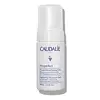What's inside
What's inside
 Key Ingredients
Key Ingredients

 Benefits
Benefits

 Concerns
Concerns

 Ingredients Side-by-side
Ingredients Side-by-side

Water
Skin ConditioningGlycerin
HumectantCoco-Glucoside
CleansingCaprylyl/Capryl Glucoside
CleansingMandelic Acid
AntimicrobialVitis Vinifera Fruit Water
Skin ConditioningSodium Levulinate
Skin ConditioningP-Anisic Acid
MaskingSodium Phytate
Citrus Paradisi Fruit Extract
Skin ConditioningPaeonia Lactiflora Root Extract
Skin ConditioningSodium Hydroxide
BufferingPapain
Skin ConditioningCitric Acid
BufferingVitis Vinifera Juice
Antioxidant1,2-Hexanediol
Skin ConditioningCaprylyl Glycol
EmollientCarbomer
Emulsion StabilisingSodium Benzoate
MaskingAlgin
MaskingPotassium Sorbate
PreservativeParfum
MaskingWater, Glycerin, Coco-Glucoside, Caprylyl/Capryl Glucoside, Mandelic Acid, Vitis Vinifera Fruit Water, Sodium Levulinate, P-Anisic Acid, Sodium Phytate, Citrus Paradisi Fruit Extract, Paeonia Lactiflora Root Extract, Sodium Hydroxide, Papain, Citric Acid, Vitis Vinifera Juice, 1,2-Hexanediol, Caprylyl Glycol, Carbomer, Sodium Benzoate, Algin, Potassium Sorbate, Parfum
Water
Skin ConditioningSodium Lauroyl Sarcosinate
CleansingCocamidopropyl Hydroxysultaine
CleansingGlycerin
HumectantNiacinamide
SmoothingSalicylic Acid
MaskingGluconolactone
Skin ConditioningSodium Methyl Cocoyl Taurate
CleansingPEG-150 Pentaerythrityl Tetrastearate
EmulsifyingXanthan Gum
EmulsifyingSodium Benzoate
MaskingSodium Hydroxide
BufferingHectorite
AbsorbentTrisodium Ethylenediamine Disuccinate
Sodium Lauroyl Lactylate
EmulsifyingTetrasodium EDTA
Calcium Gluconate
HumectantCeramide NP
Skin ConditioningTriethyl Citrate
MaskingCaprylyl Glycol
EmollientCeramide AP
Skin ConditioningPhytosphingosine
Skin ConditioningCholesterol
EmollientHydrolyzed Hyaluronic Acid
HumectantCarbomer
Emulsion StabilisingBenzoic Acid
MaskingCeramide EOP
Skin ConditioningWater, Sodium Lauroyl Sarcosinate, Cocamidopropyl Hydroxysultaine, Glycerin, Niacinamide, Salicylic Acid, Gluconolactone, Sodium Methyl Cocoyl Taurate, PEG-150 Pentaerythrityl Tetrastearate, Xanthan Gum, Sodium Benzoate, Sodium Hydroxide, Hectorite, Trisodium Ethylenediamine Disuccinate, Sodium Lauroyl Lactylate, Tetrasodium EDTA, Calcium Gluconate, Ceramide NP, Triethyl Citrate, Caprylyl Glycol, Ceramide AP, Phytosphingosine, Cholesterol, Hydrolyzed Hyaluronic Acid, Carbomer, Benzoic Acid, Ceramide EOP
Ingredients Explained
These ingredients are found in both products.
Ingredients higher up in an ingredient list are typically present in a larger amount.
Caprylyl Glycol is a humectant and emollient, meaning it attracts and preserves moisture.
It is a common ingredient in many products, especially those designed to hydrate skin. The primary benefits are retaining moisture, skin softening, and promoting a healthy skin barrier.
Though Caprylyl Glycol is an alcohol derived from fatty acids, it is not the kind that can dry out skin.
This ingredient is also used as a preservative to extend the life of products. It has slight antimicrobial properties.
Learn more about Caprylyl GlycolCarbomer is a polymer of acrylic acid. Its main role is to create a gel consistency.
A high amount of carbomer can cause pilling or balling up of products. Don't worry, most products contain 1% or less of carbomer.
Glycerin is already naturally found in your skin. It helps moisturize and protect your skin.
A study from 2016 found glycerin to be more effective as a humectant than AHAs and hyaluronic acid.
As a humectant, it helps the skin stay hydrated by pulling moisture to your skin. The low molecular weight of glycerin allows it to pull moisture into the deeper layers of your skin.
Hydrated skin improves your skin barrier; Your skin barrier helps protect against irritants and bacteria.
Glycerin has also been found to have antimicrobial and antiviral properties. Due to these properties, glycerin is often used in wound and burn treatments.
In cosmetics, glycerin is usually derived from plants such as soybean or palm. However, it can also be sourced from animals, such as tallow or animal fat.
This ingredient is organic, colorless, odorless, and non-toxic.
Glycerin is the name for this ingredient in American English. British English uses Glycerol/Glycerine.
Learn more about GlycerinSodium Benzoate is a preservative. It's used in both cosmetic and food products to inhibit the growth of mold and bacteria. It is typically produced synthetically.
Both the US FDA and EU Health Committee have approved the use of sodium benzoate. In the US, levels of 0.1% (of the total product) are allowed.
Sodium benzoate works as a preservative by inhibiting the growth of bacteria inside of cells. It prevents the cell from fermenting a type of sugar using an enzyme called phosphofructokinase.
It is the salt of benzoic acid. Foods containing sodium benzoate include soda, salad dressings, condiments, fruit juices, wines, and snack foods.
Studies for using ascorbic acid and sodium benzoate in cosmetics are lacking, especially in skincare routines with multiple steps.
We always recommend speaking with a professional, such as a dermatologist, if you have any concerns.
Learn more about Sodium BenzoateSodium Hydroxide is also known as lye or caustic soda. It is used to adjust the pH of products; many ingredients require a specific pH to be effective.
In small amounts, sodium hydroxide is considered safe to use. However, large amounts may cause chemical burns due to its high alkaline.
Your skin has a natural pH and acid mantle. This acid mantle helps prevent harmful bacteria from breaking through. The acid mantle also helps keep your skin hydrated.
"Alkaline" refers to a high pH level. A low pH level would be considered acidic.
Learn more about Sodium HydroxideWater. It's the most common cosmetic ingredient of all. You'll usually see it at the top of ingredient lists, meaning that it makes up the largest part of the product.
So why is it so popular? Water most often acts as a solvent - this means that it helps dissolve other ingredients into the formulation.
You'll also recognize water as that liquid we all need to stay alive. If you see this, drink a glass of water. Stay hydrated!
Learn more about Water